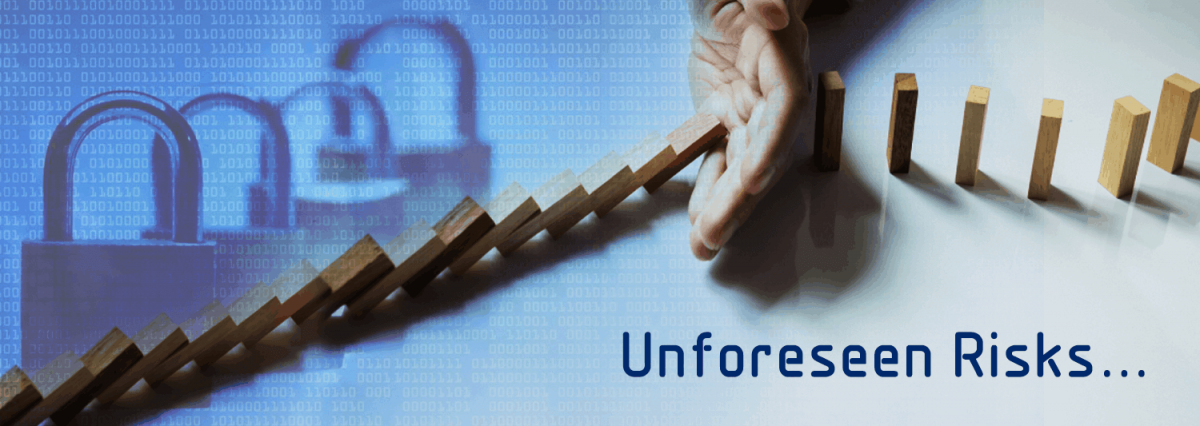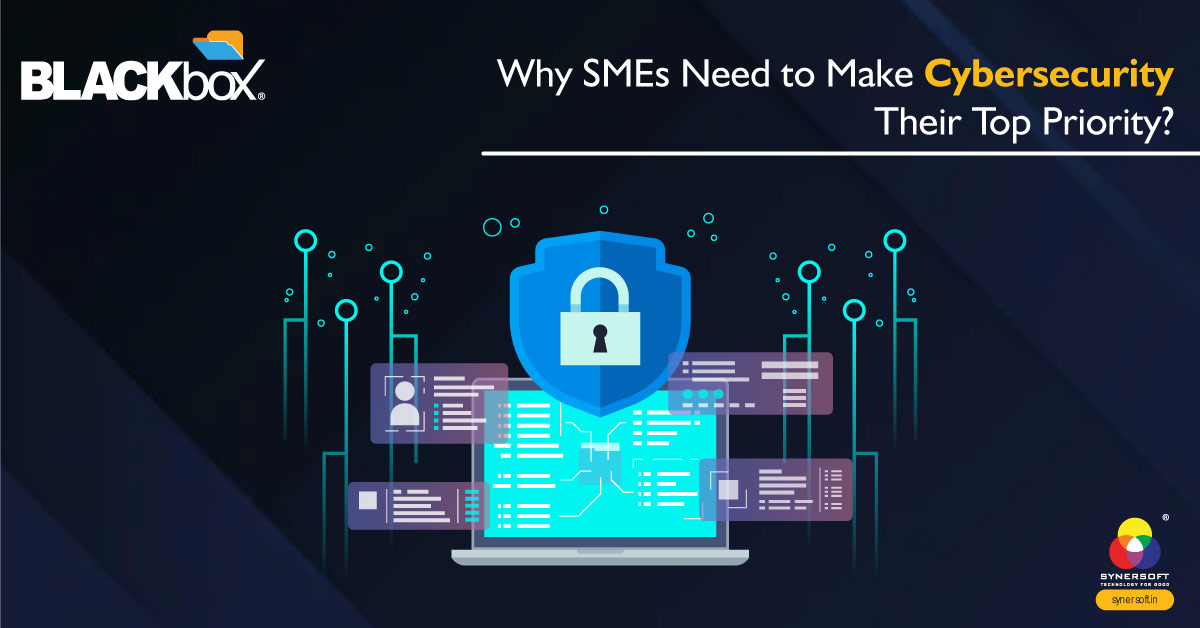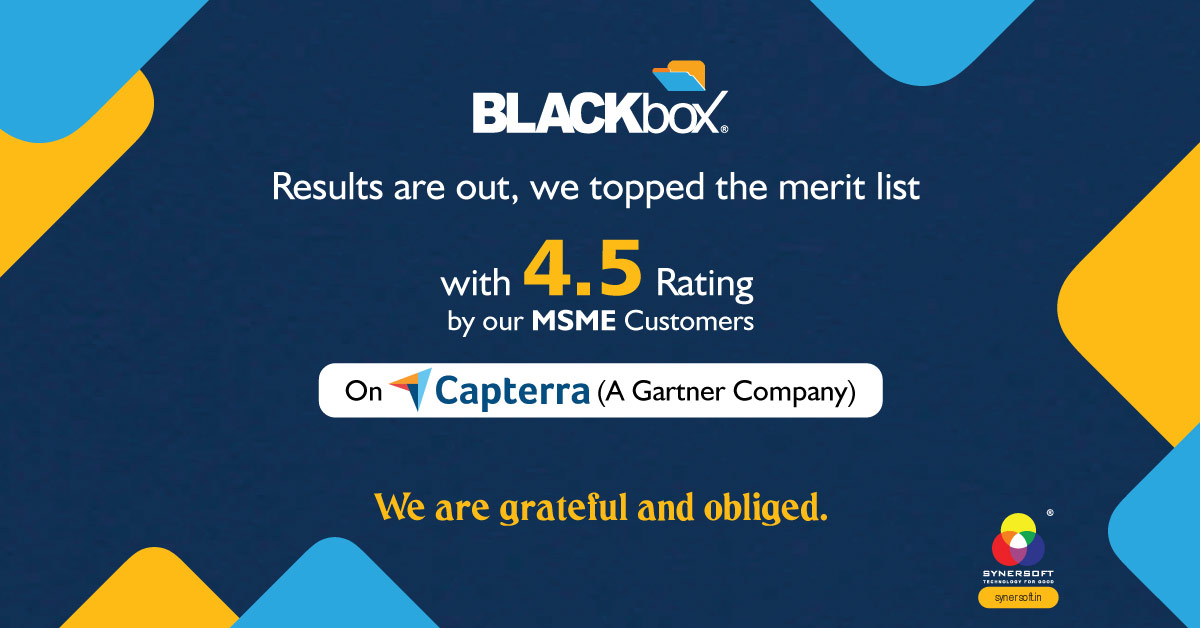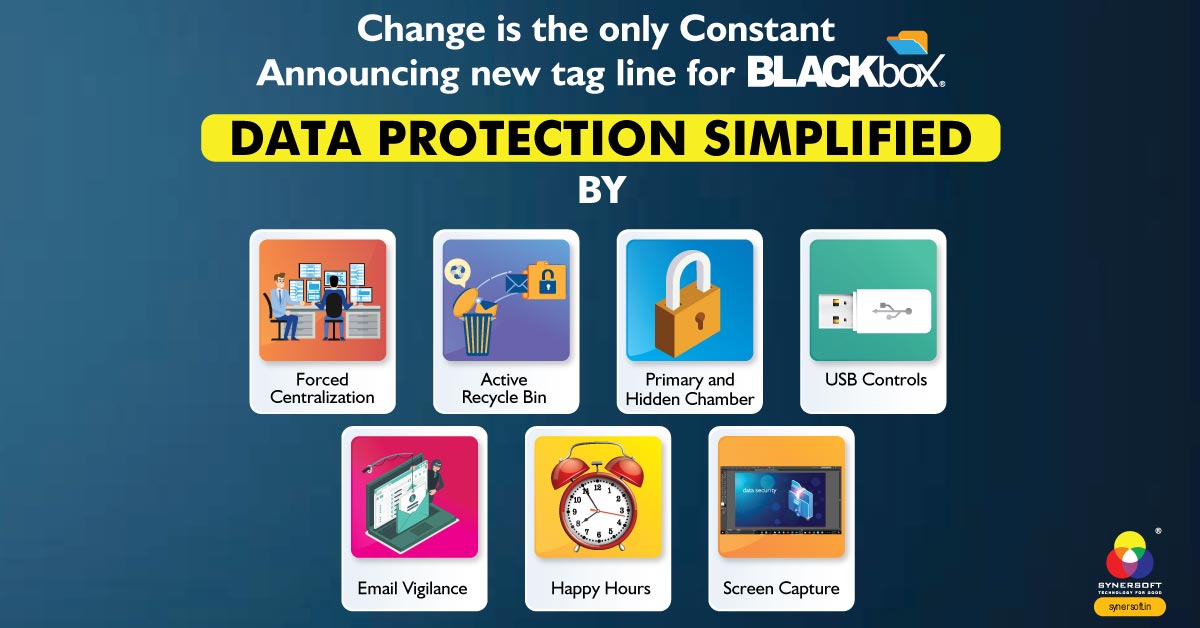- Have any questions?
- info@synersoft.in

Is your laptop Hole or a Plug?
September 15, 2017
Know why BLACKbox price rises…
October 2, 2017Unseen Assets, Unforeseen Risks…

Hi There,
Unseen, expresses mystery, uncertainty, fear and risk. And Unforeseen surely damages.
I am writing this blog to help my SME readers to realize their Unseen Assets and associated Unforeseen Risks.
As an enterprise owns tangible assets like land, plant, machinery, office, computers, servers, hardware, equally do they own intangible digital assets, technology, goodwill, knowledge.
In this blog, I attempt to identify these digital assets, associated risks and solution practices.
Here we go,
Your 1st digital asset is your ERP data. It is generated by a single ERP software (like tally, SAP, or homegrown) or by multiple packages (like accounting, inventory, CRM software). Always, such data is in the form of few database files as SQL files or data files. Mostly they are stored on server.
These data files are enterprise’s digital assets, containing
- Your Business Model
- Your Profitability, Sourcing, Terms of Business Deals
- Your Best and Worst Customers and their transactions
- Your Financial Profile
- Your Key Employees Salary Details
- Strategic Trends over a period of time
Solution Practices
- Make sure that your ERP / Software data backup happens automatically.
- Make sure that automatic backup happens outside of your premise to provide for disaster. Never push data on cloud over Internet. Always send it through VPN to a tangible data center.
- Make sure that your backup is maintained in different versions so you always have a previous version, if Ransomware / Virus strikes.
- Make sure that your backup media (harddisk) is not handled by irresponsible employees. Simply they can’t understand the importance of it.
- Make sure that server on which these data files are stored, are not loaded with internet, email software or active USB. It makes it very easy to take away data.
Your 2nd digital asset is your Designs, Drawings, Documents, Spreadsheets. It is generated by a Autocad, 3D, Word, Excel, Solidworks kind of software. Always, such data is in the form of dwg, doc, xls, psd, cdr files. They are always scattered on servers, desktops and laptops.
These data files are enterprise’s digital assets, containing
- Your Intellectual Property, Designs, Technology
- Important Calculations, Correspondence
- Your customer’s confidential data for which you might have signed NDA (Non Disclosure Agreement)
These data files are subject to serious risk of loss (by deletion), destruction (by disaster) or manipulation (by virus / ransomware). Loss, Destruction, or Manipulation can ruin your business to standstill. Not only this but also, these data files are subject to serious risk of theft or unauthorized access leading to irreversible competitive damage. Theft or unauthorized access can cause quantified business losses against smarter competitors.
Solution Practices
- Make sure that your files are not scattered on devices. Look for Forced Data Centralization solutions from desktop and laptops.
- Do not be at Users’ mercy to save data on server, instead do not give them choice to save data anywhere else.
- Make sure that your backup is maintained in different versions so you always have a previous version, if Ransomware / Virus strikes.
- Make sure that your laptops are backed up every hour. They are used by most important people and contain most important data.
- Make sure that automatic backup happens outside of your premise to provide for disaster. Never push data on cloud over Internet. Always send it through VPN to a tangible data center.
- Have utmost vigilance on your email systems and sending policies on users.
- Install data theft prevention solutions to check data leakage over USB and Internet.
Your 3nd digital asset is your Emails. It is the busiest mode of communication, you do with the world. They are either in your email client (PST files or any) or on cloud (GMail or such). You do commitments, raise disputes, agree, disagree on emails to your vendors, employees, government, competitors and customers.
These data files are enterprise’s digital assets, containing
- Communications
- Attachments
- Addressbooks
These data files are subject to serious risk of loss (by deletion), destruction (by disaster) or manipulation (by virus / ransomware). Loss, Destruction, or Manipulation can ruin your business to standstill. Not only this but also, these data files are subject to serious risk of theft or unauthorized access leading to irreversible competitive damage. Theft or unauthorized access can cause quantified business losses against smarter competitors.
Solution Practices
- Make sure that you have incoming and outgoing email backup of every user.
- Make sure that you have a local (in-premise) copy of all your emails on cloud (cloud is subject to hacking and you may loose all your emails)
- Make sure that you can enforce policies on your email communication to check data theft.
- Make sure you can control usage of BCC (Blind Carbon Copy) as it can be sued to steal data
- Make sure that all your users do not know email passwords. Understand that passwords saved in outlook files can be easily retrieved.
- Do not copy all your in and out emails in single account. it is useless. when you want to restore emails of single user, you can’t just do it if you have thousands and lacs of emails in single account.
I hope that my blog is an eye opening content for SME owners. There are solutions available to take care of all above points and adopt aforesaid solution practices.





